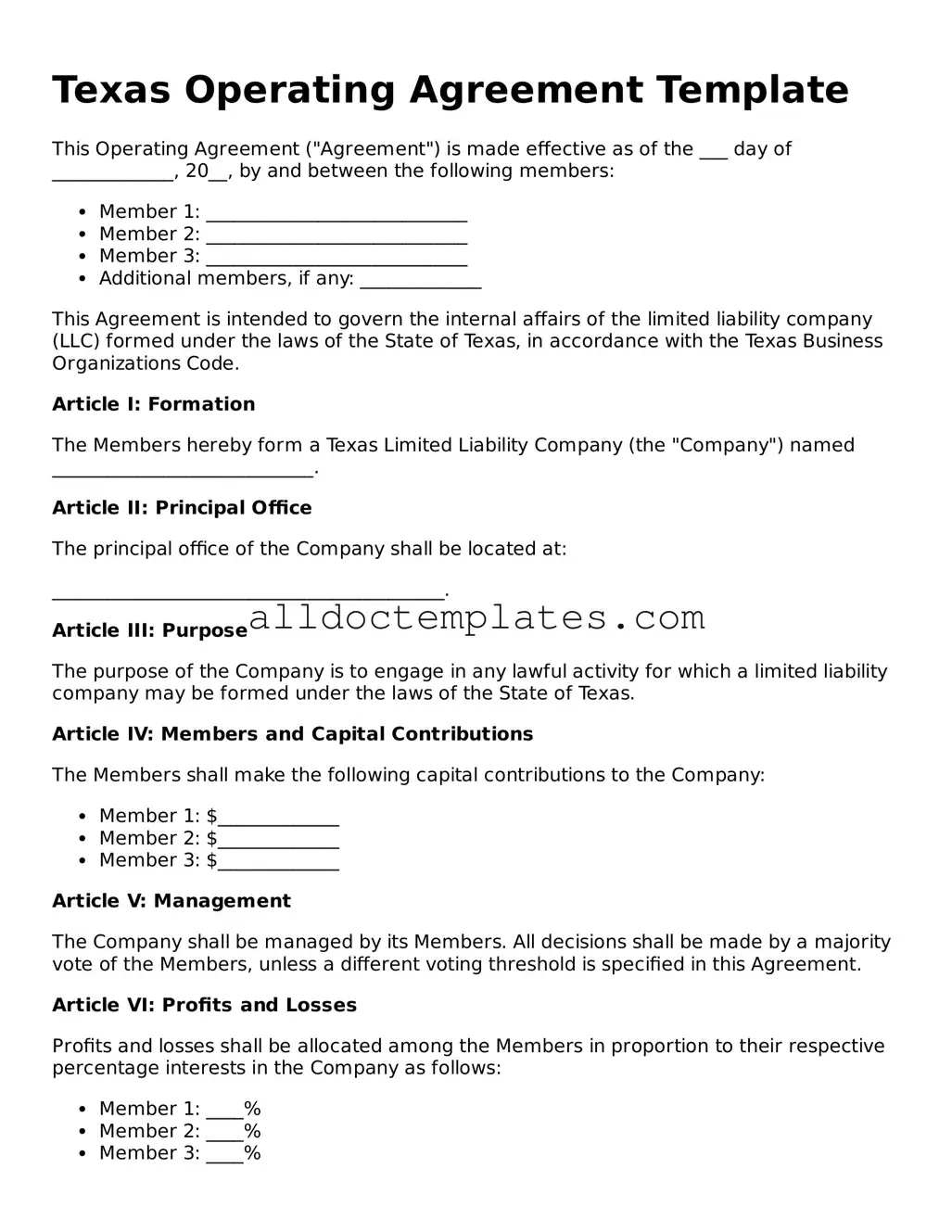Texas Operating Agreement Template
This Operating Agreement ("Agreement") is made effective as of the ___ day of _____________, 20__, by and between the following members:
- Member 1: ____________________________
- Member 2: ____________________________
- Member 3: ____________________________
- Additional members, if any: _____________
This Agreement is intended to govern the internal affairs of the limited liability company (LLC) formed under the laws of the State of Texas, in accordance with the Texas Business Organizations Code.
Article I: Formation
The Members hereby form a Texas Limited Liability Company (the "Company") named ____________________________.
Article II: Principal Office
The principal office of the Company shall be located at:
__________________________________________.
Article III: Purpose
The purpose of the Company is to engage in any lawful activity for which a limited liability company may be formed under the laws of the State of Texas.
Article IV: Members and Capital Contributions
The Members shall make the following capital contributions to the Company:
- Member 1: $_____________
- Member 2: $_____________
- Member 3: $_____________
Article V: Management
The Company shall be managed by its Members. All decisions shall be made by a majority vote of the Members, unless a different voting threshold is specified in this Agreement.
Article VI: Profits and Losses
Profits and losses shall be allocated among the Members in proportion to their respective percentage interests in the Company as follows:
- Member 1: ____%
- Member 2: ____%
- Member 3: ____%
Article VII: Distributions
Distributions shall be made to the Members at such times and in such amounts as determined by the Members.
Article VIII: Amendments
This Agreement may be amended only by a written agreement signed by all Members.
Article IX: Governing Law
This Agreement shall be governed by and construed in accordance with the laws of the State of Texas.
IN WITNESS WHEREOF, the Members have executed this Operating Agreement as of the date first above written.
___________________________________
Member 1 Signature
___________________________________
Member 2 Signature
___________________________________
Member 3 Signature
Date: ___/___/_____
